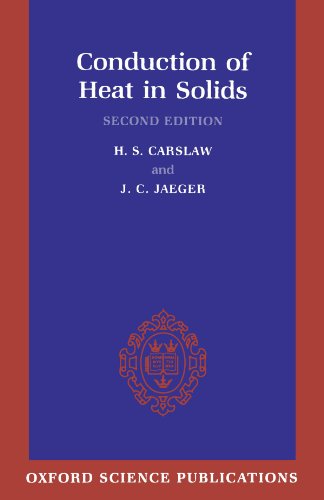Conduction of Heat in Solids pdf download
Par roberts christopher le mardi, août 30 2016, 02:01 - Lien permanent
Conduction of Heat in Solids. H. S. Carslaw, J. C. Jaeger

Conduction.of.Heat.in.Solids.pdf
ISBN: 0198533683,9780198533689 | 517 pages | 13 Mb

Conduction of Heat in Solids H. S. Carslaw, J. C. Jaeger
Publisher: Oxford University Press, USA
Thermal conductivity is a property derived in cases where conduction mode of heat transfer is studied and conduction of heat occurs through non flow motion of molecules example as solids where the molecules are not free to move. Transfer of heat within a fluid is by convection. In the event that heat transfer occurs through several solids, the above equation can be adapted by supplementing the solid's thickness (L) divided by its thermal conductivity (λ). Conduction is heat transfer from warm to cooler areas within a material, or between two materials touching each other. Conduction is the transfer of heat along a solid object; it is this process that makes the handle of a poker hot, even if only the tip is in the fireplace. Liquids: Most of the liquids transfer heat very well. Heat Conduction: Lumped System Analysis – Heat Transfer in Semi infinite and infinite solids – Use of Transient – Temperature charts – Application of numerical techniques. Heat can be transferred by three processes: conduction, convection, and radiation. Gases, such as air, do not conduct heat very well. Asked by: kunal 35 views Heat_and_Temperature · science-5th. Conduction is the mechanism by which heat is transferred within material objects and between material objects that are in physical contact with one another. In general “heat transfer” can be considered to explain both the Mpemba and the Leidenfrost effect, and there are three modes of heat transfer. The primary mode of heat transfer in solids is. Transfer of heat in solids is by conduction. Such bad conductors of heat are called insulators.